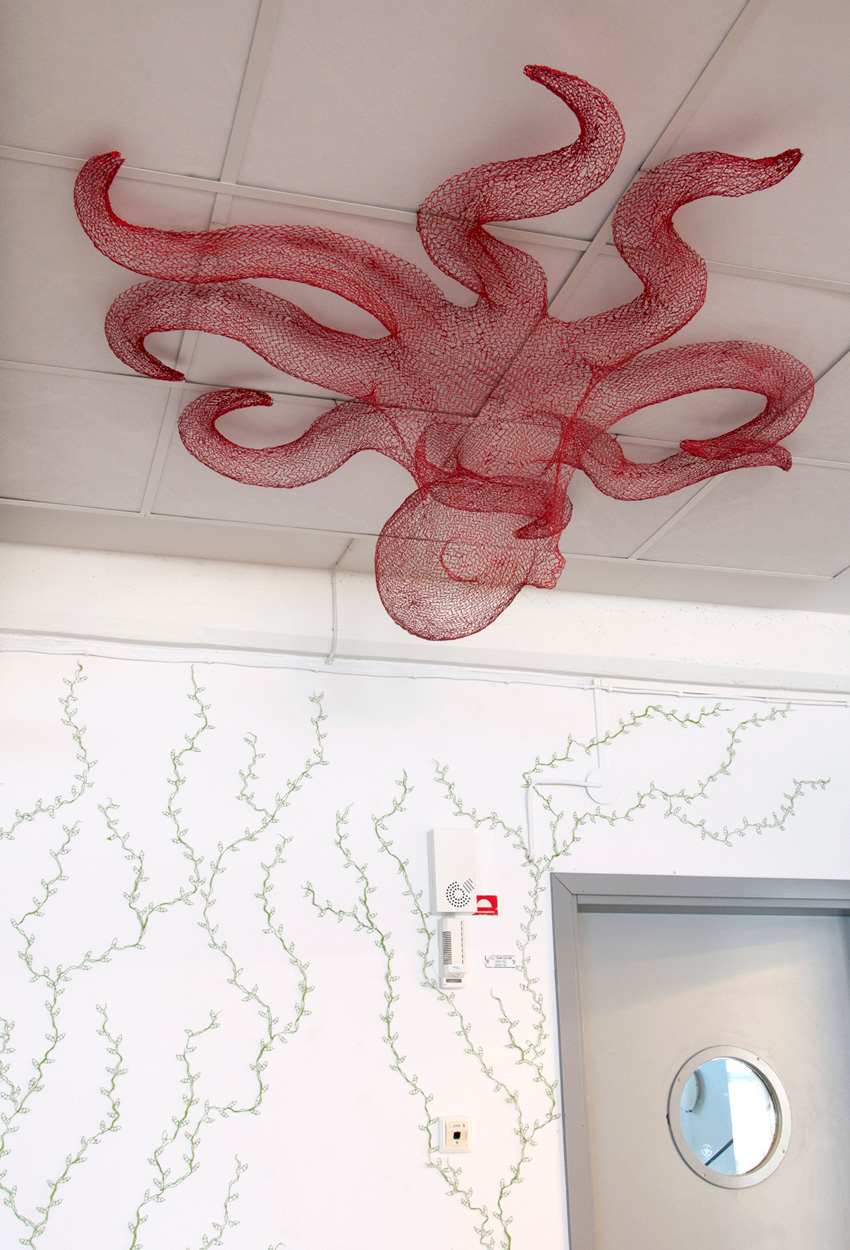

“I’ll have to make new ones and probably bolt them down with security screws,” he said. He assumes the original pieces are all but consumed, even though there’s a reward for their return. The Louisville resident said he was surprised to see somebody had managed to remove the noodles, which he said were attached pretty securely. They went missing late last month, presumed stolen.Īrtist Justin Deister was already preparing to cook up some new noodles when contacted last week. Except now it appears somebody couldn’t resist the noodles. This year “say cheese!” is displayed in Greeley in a downtown plaza.

Not everybody loved the work, but a lot of people did, and it was hard not to take note of.
Macaroni sculpture mac#
Stephen’s Plaza and was a sculpture of a fork standing on end with each of its four prongs stuck into a mac ‘n’ cheese noodle. As it turns out, the traditional pasta shapes we all know and love may seem "boring" to some, but they're incredibly sophisticated designs that earned their place on your plate - at least until the Pastajet hits the market.One of the most talked about works of public art in Longmont last year was “say cheese!,” which was on loan to the city as part of its Art in Public Places program. "A design that is fairly good but not excellent will never motivate the dynamics of commercial produciton or the market." Good advice for designing anything, really. "The various gaps between my expectations and reality included the mammoth quantity prodcued and the degree of elaboration and exactitude in planning," Hara wrote in his book Designing Design. Hara admits that he over-romanticized pasta design in relation to the absolute juggernaut that is the commerical pasta industry. This is largely because the shapes were just too idiosyncratic. While the exhibition was popular, no manufacturers were enticed to commercially produce any of the macaroni shapes. Each macaroni design was paired with a recipe created specifically to complement the noodles particular idiosyncrasies. But they were also challenged to avoid anything resembling the simple, traditional shapes we’re all familiar with. While creating their designs, which were modeled at twenty times the size of an actual noodle, the architects had to address classic pasta problems like heat conduction, sauce application, and ease of production. Why are there only a few traditional preparations? Why aren’t there macaroni trends? Could Kraft or Barilla come out with a new model every year (something other than novelty cartoon shapes, that is)? These are the questions Hara hoped his exhibit might answer. Therefore, the process of shaping it can be called design.” Hara wondered why, if macaroni is designed, it’s hasn’t changed. As Hara notes, “macaroni is an object has has already undergone some preparation, so because we’re just giving form to a powdered material, it doesn’t really matter what shape we give it. Cooking could be considered a form of design, and even some basic foodstuffs could perhaps thought of as “designed” in its preparation. For Hara, the show was an early and sincere effort to design food.

Sponsored by the Japan Institute of Architects, the Architects’ Macaroni Exhibition was an effort to showcase the talent of 20 Japanese architects in a way that can be clearly understood by the general public: macaroni design. On a more optimistic note, this futuristic designer pasta reminds me of the Architects’ Macaroni Exhibition, a show curated by Muji art director Kenya Hara in 1995. Welcome to the future, where all your food comes in cartridges.

No word yet on 3D printed meatballs, atlthough I hear Keurig is looking to branch out into broths and sauces (really!). So instead of filling your pantry with blue boxes, you can fill it with Barilla's proprietary pasta print cartridges. The pasta printers seem to be targeted for high-end commercial kitchens but might end up in your home too. Though they're only in the early phases of their research, Barilla hopes to one day have the capability to print 20 pieces of pasta in two minutes. By that comparison, printed pasta seems rather pedestrian. And why not? We're already 3D printing guns, human ears, even houses. According to The Guardian, the pasta giant is exploring the use of 3D printers to create customized pasta shapes. Grocery store shelves everywhere are filled with dozens of different shapes and sizes of pasta, but if Barilla has their say, penne, rotini, and farfalle will be joined by roses, fossilized dolphin skulls, and Venus de Milos (de Mili?) - or any other weird or beautiful shape you can think of for that matter.


 0 kommentar(er)
0 kommentar(er)
